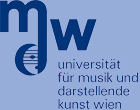List of Vienna Talk 2010 presenters

Amir, Noam
(P,O)Andermann, Martin
(P)Arzt, Andreas
(O)Bastos, Patricia Lopes
(P)Beauchamp, James Warren
(O,O)Bendl, Ingrid
(P)Bertsch, Matthias
(P)Bisesi, Erica Elisabetta
(O)Buen, Anders
(O)Campbell, Murray
(O)Cano, Estefania
(P)Carral, Sandra
(P)Carter, Stewart Arlen
(O)Chatziioannou, Vasileios
(P)Chick, John
(O)Curtit, Marthe
(O)Dalmont, Jean-Pierre
(O)Davidenkova, Ekaterina
(O)Demoucron, Matthias
(O)Doutaut, Vincent
(P)Dörfler, Monika
(O)Flossmann, Sebastian
(O)Fouilhe, Eric
(O)Fricke, Jobst P.
(O)Fritz, Claudia
(O)Gingras, Bruno
(O)Goebl, Werner
(P)Granzotto, Nicola
(P)Grosshauser, Tobias
(O)Guettler, Knut
(O)Hansen, Uwe J
(O)Kartofelev, Dmitri
(P)Kausel, Wilfried
(P)Kemp, Jonathan
(O,O)Klaus, Sabine Katharina
(O)Kostek, Bozena
(O)Lambrechts-Douillez, Jeannine
(O)Lohri, Angela
(P)Marchand, Sylvain
(O)Mayer, Alexander
(P)Moore, Thomas
(O,O)Presentation type: Oral / Invited
Air column effects and direct radiation due to bell vibrations of a brass wind instrument
The effects of wall vibrations on the sound of modern brass instruments has been a topic of discussion for decades. Recent theoretical work has indicated that damping the breathing modes of the flaring bell may be responsible for observed changes in the sound when wall vibrations are damped. We present measurements of the changes in the transmission function, input impedance, and acoustical signature of a modern trumpet when vibrations of the bell are heavily damped, and compare them to predictions from such a theory. The magnitude of the effect attributable to changing the air column is compared to the effect attributable to direct radiation of the vibrating bell. Measurements indicate that much, but not all, of the change in the sound of a brass wind instrument that results from damping bell vibrations can be attributed to changes in the air column. The magnitude of these changes compares well with the theory.

Visualizing structural vibrations using laser speckle
Scientists have been seeking new ways of imaging small vibrations since Chladni first placed sand on a vibrating plate in the 18th century. For the 200 years following Chladni’s discovery there were few other methods available for imaging vibrations; however, in the latter half of the 20th century the invention of the laser spurred the development of several different methods to optically image sub-micrometer vibrations. Of the optical methods available today for visualizing vibrations, the broad class of imaging techniques that rely on the phenomenon of laser speckle has become particularly useful. An overview of some of these speckle imaging techniques will be presented, with an emphasis on visualizing the vibrations of musical instruments. Several examples will be discussed, and ideas for the inexpensive construction of the necessary apparatus’ will be reviewed.

Morrison, Andrew
(O)Myers, Arnold
(O)Nederveen, Cornelis J
(O)Niedermayer, Bernhard
(O)Norman, Lisa
(O)Oehler, Michael
(O)Otcenasek, Zdenek
)Pyle, Robert W.
(O,O)Reuter, Christoph
(O)Richardson, Bernard
(P,O)Rose, Maria
(O)Rossing, Thomas D.
(O,O)Sanchez, Monica
(P)Schoonderwaldt, Erwin
(O)Sharp, David
(O)Siddiq, Sadjad
(P)Skala, Jan
(P)Smith, Richard
(O)Sundberg, Johan
)Taylor, Crissman
(O)Tronchin, Lamberto
(O)Tsai, Pei Ju
(P)Vereecke, Hannes William
(P)Vergez, Christophe
(O)Widmer, Gerhard
(O)Worland, Randy
(O)Ziegenhals, Gunter
(O)van der Linden, Janet
(O)





